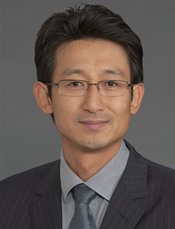Advanced MR in the Clinic
Q Yuan1*, X Zhou2*, Y Jung3*, H Liu4*, C Lin5*, S Einstein6*, (1) UT Southwestern Medical Center, Dallas, TX, (2) University of Illinois College of Medicine at Chicago, Chicago, IL, (3) University of California, Davis, Sacramento, CA, (4) UT MD Anderson Cancer Center, Houston, TX, (5) Mayo Clinic, Jacksonville, FL, (6) Penn State Hershey Medical Center, Hershey, PA
Presentations
TU-AB-207-0 (Tuesday, 7/12/2022) 7:30 AM - 9:30 AM [Eastern Time (GMT-4)]
Room 207
Speaker 1 (Qing Yuan, PhD) – T1/T2/T2* Mapping
MR relaxometry extracts numerical values of tissue relaxation properties from MR images. The derived T1, T2 and T2* maps can be utilized for disease detection, differentiation, and treatment monitoring. Successful implementation of MR relaxometry in clinical practice requires robust organ-specific methods with low bias and high precision in the decision-making process for patient care. In this lecture, we will review the basic principles of MR relaxometry, and its existing applications in clinical MRI of liver, heart, and knee. Technical development and practical implementation of the imaging methods, as well as associated quality assurance procedures will be discussed. Finally, emerging multi-parametric mapping and machine learning enabled MR relaxometry will be introduced.
Learning Objectives:
1. To understand the basic principles and clinical applications of MR relaxometry in imaging the liver, heart, and knee;
2. To be able to implement the MR relaxometry methods and the appropriate quality assurance program for a specific clinical application;
3. To be familiar with the emerging MR relaxometry methods to support technical development and clinical validation.
Speaker 2 (Xiaohong Joe Zhou, PhD) – Diffusion MRI
Diffusion MRI has been increasingly used in the clinic with a broad range of applications spanning from neurologic disorders to cancer. This lecture will review recent technical developments and clinical applications of diffusion MRI, with a special emphasize on how a clinical medical physicist can help translating diffusion MRI into the clinic. First, we will describe how molecular diffusion information can be encoded into the MR signal in several common pulse sequences. Second, we will provide an overview of diffusion models that can be used to relate MRI measurement to biologically relevant tissue properties, such as cellularity, vascularity, heterogeneity, and other microstructures. Third, we will discuss several practical issues, including imaging protocols, motion management, reproducibility and reliability, and quality assurance. Lastly, we will highlight a few emerging applications that will likely impact clinical practice in the near future.
Learning Objectives:
1. To understand commonly used diffusion MRI pulse sequences in the clinic;
2. To understand the common diffusion models in diffusion MRI analysis;
3. To be able to implement diffusion imaging protocols and conduct quality assurance.
Speaker 3 (Youngkyoo Jung, PhD) – Perfusion MRI
Blood perfusion is a physiological function that delivers oxygen and nutrients to tissue. Perfusion can be assessed with MRI using an exogenous contrast agent or blood itself. The MRI techniques using a gadolinium based contrast agent include dynamic susceptibility contrast MRI and dynamic contrast enhanced MRI. In contrast, arterial spin labeling MRI is a technique using blood as an endogenous contrast agent. Each perfusion MRI technique is based on its unique physical and physiological characteristics and, therefore, can be used to derive different perfusion-related parameters. A perfusion MRI method can be chosen depending on physiological parameters that relates to a certain pathologic condition.
Learning Objectives:
1. To understand physiological and physical principles of perfusion MRI methods;
2. To understand perfusion models and parameters derived from different techniques;
3. To be able to choose and implement the relevant perfusion MRI method in the clinic.
Speaker 4 (Ho-Ling Anthony Liu, PhD) – Functional MRI
Functional MRI (fMRI) based on the blood oxygenation level-dependent (BOLD) contrast has been widely applied in clinical studies for the management of neurological diseases. In particular, it is a promising tool for presurgical functional mapping of eloquent brain areas to help maximizing the lesion resection while preventing post-operative functional deficits. Common task-based fMRI paradigms used in the clinic include motor, language and visual stimulations. In addition, resting-state fMRI can be used to map functional networks for patients with limited task performance. This lecture will provide an overview of biophysical mechanism of fMRI, as well as practical implementation, protocol optimization, quality assurance, and limitations of fMRI in the clinic. Emerging techniques and their applicability to enhance clinical fMRI will also be discussed.
Learning Objectives:
1. To understand the basic principle of fMRI and hardware/software requirements for a presurgical fMRI service;
2. To be able to implement and optimize clinical fMRI protocols and data analysis;
3. To be able to conduct quality assurance and understand the limitations and artifacts in clinical fMRI.
Speaker 5 (Chen Lin, PhD) – MR Elastography
Magnetic resonance elastography (MRE) is a unique technique that can measure microscopic displacement in the tissue due to the propagation of mechanical waves and therefore allows non-invasive quantification of tissue properties such as stiffness which is often altered by various pathology. Since its invention in 1990s, MRE has gradually gained clinical acceptance and expanded its application beyond the evaluation of liver fibrosis to other organs and diseases in the body. This lecture is aimed at providing a brief overview of MRE, covering the basic principles, technical implementation, hardware and software requirements, clinical examples as well as recommended quality assurance method.
Learning Objectives:
1. Gain basic knowledge of MRE for the purpose of planning, setting up and supporting MRE in clinical practice;
2. Understand the key difference between MR elastography and US elastography;
3. Be aware of the pitfalls with MR elastography in order to optimize MRE protocol and improve quality.
Speaker 6 (Samuel A. Einstein, PhD) – MR Spectroscopy
MR spectroscopy (MRS) is a rapidly-expanding clinical technique for non-invasive assessment of tissue metabolites. MRS has proven to be a powerful tool for the diagnosis, monitoring, and evaluation of lesions, neoplasms, and metabolic disorders in the brain and other regions of the body. This segment will begin by presenting the basic physics of MRS, clinically-available MRS pulse sequences, and common clinical applications of MRS. Recommended analysis approaches for the clinic will then be discussed along with common MRS artifacts. Finally, best practices for MRS QA will be described.
Learning Objectives:
1. Understand the basic physics, acquisition techniques, and clinical applications of MR spectroscopy;
2. Understand the different methods for analyzing MR spectra;
3. Identify common artifacts and be able to implement suggested MR spectroscopy QA.
Handouts
- 175-63232-16291659-183472-1842634189.pdf (Youngkyoo Jung)
- 175-63230-16291659-184106-534780157.pdf (Qing Yuan)
- 175-63235-16291659-183276-162358326.pdf (Samuel Einstein)
- 175-63234-16291659-183567-1964421853.pdf (Chen Lin)
- 175-63233-16291659-183576-1017825401.pdf (Ho-Ling Anthony Liu)
Keywords
MRI, MRS, Quantitative Imaging
Taxonomy
IM- MRI : General (Most aspects)
Contact Email















